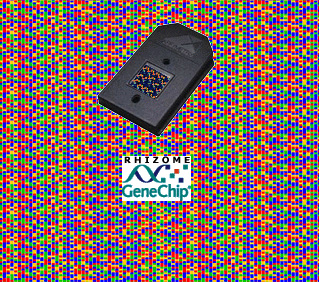Splash art originated in the 1940s in comics, where the term referred to a full page of visuals at the front of a book. Pages were designed to engage the reader's imagination along the lines of the comic's broader concept, while standing independent from the narrative. In the late 1990s, when the widespread use of the application Flash opened up new possibilities for animation and interactive media, the idea of the splash page migrated to web design. Online splash art brought visual excitement to a webpage when low modem speeds made it impractical to post large or moving images amid a site's textual content.
Rhizome introduced splash pages to its web site in 1998 in order to display artwork with greater immediacy....
Rhizome introduced splash pages to its web site in 1998 in order to display artwork with greater immediacy....
Launch Project 
 splash art by Eugene Thacker, 1998
splash art by Eugene Thacker, 1998
About
Cultural theorist Eugene Thacker expressed his interest in biopolitics and the scientific quantification of the human body by devoting his splash art to the subject of DNA microarrays, a technology that was developed in the mid-1990s to measure chemical levels in DNA and detect mutant genomes, among other applications. The background of Thacker's splash page is a multi-colored, animated grid that simulates the microarray as it appears on the glass surface of the chip that takes the measurements. A picture of the chip itself sits in the center. But Thacker replaced the logo of Affymetrix, the company that patented the first DNA microarray, with Rhizome's, thus critiquing a corporation's claim to ownership of the information included in the human genome and the ability to read it.
http://www.lcc.gatech.edu/~ethacker
http://www.lcc.gatech.edu/~ethacker